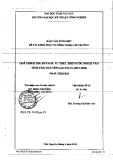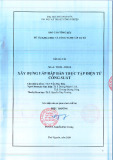
BioMed Central
Page 1 of 9
(page number not for citation purposes)
Journal of Translational Medicine
Open Access
Review
Immunological considerations of modern animal models of
malignant primary brain tumors
Michael E Sughrue, Isaac Yang, Ari J Kane, Martin J Rutkowski, Shanna Fang,
C David James and Andrew T Parsa*
Address: Department of Neurological Surgery, University of California at San Francisco, San Francisco, California, USA
Email: Michael E Sughrue - Mes261@columbia.edu; Isaac Yang - Yangi@neurosurg.ucsf.edu; Ari J Kane - Ari.Kane@ucsf.edu;
Martin J Rutkowski - martin.rutkowski@gmail.com; Shanna Fang - Shanna.fang@ucsf.edu; C David James - david.james@ucsf.edu;
Andrew T Parsa* - Parsaa@neurosurg.ucsf.edu
* Corresponding author
Abstract
Recent advances in animal models of glioma have facilitated a better understanding of biological
mechanisms underlying gliomagenesis and glioma progression. The limitations of existing therapy,
including surgery, chemotherapy, and radiotherapy, have prompted numerous investigators to
search for new therapeutic approaches to improve quantity and quality of survival from these
aggressive lesions. One of these approaches involves triggering a tumor specific immune response.
However, a difficulty in this approach is the the scarcity of animal models of primary CNS
neoplasms which faithfully recapitulate these tumors and their interaction with the host's immune
system. In this article, we review the existing methods utilized to date for modeling gliomas in
rodents, with a focus on the known as well as potential immunological aspects of these models. As
this review demonstrates, many of these models have inherent immune system limitations, and the
impact of these limitations on studies on the influence of pre-clinical therapeutics testing warrants
further attention.
The Potential Promise of Immunotherapy for
Primary Brain Tumors
Primary central nervous system (CNS) malignancies,
though of low incidence in relation to many adult solid
tumors, represent a disproportionately large fraction of
cancer deaths due to their highly aggressive and fatal char-
acter. For example, Glioblastoma Multiforme (GBM), the
most common and malignant brain tumor of adults, car-
ries a median survival of less than 1 year. While current
approaches to brain tumor therapy, including surgical
resection, radiotherapy, and either systemic or local chem-
otherapy with either nitrosoureas or temozolamide,
appear to prolong survival for patients with CNS cancers,
the modest effect of these therapies, and their associated
morbidity, has left investigators in search of alternative
and novel treatments to extend quantity and quality of life
for affected patients [1].
The nearly infinite flexibility and remarkable cellular spe-
cificity of the human immune response makes immune
based approaches an attractive option to current therapy,
which either crudely target entire regions of the brain (e.g.
surgery, radiation), or potentially interfere with the cellu-
lar metabolism of all dividing cells in the body (e.g.
alkylating agents). However, immunotherapy is not with-
out technical barriers, which have hindered its incorpora-
Published: 8 October 2009
Journal of Translational Medicine 2009, 7:84 doi:10.1186/1479-5876-7-84
Received: 8 July 2009
Accepted: 8 October 2009
This article is available from: http://www.translational-medicine.com/content/7/1/84
© 2009 Sughrue et al; licensee BioMed Central Ltd.
This is an Open Access article distributed under the terms of the Creative Commons Attribution License (http://creativecommons.org/licenses/by/2.0),
which permits unrestricted use, distribution, and reproduction in any medium, provided the original work is properly cited.






























